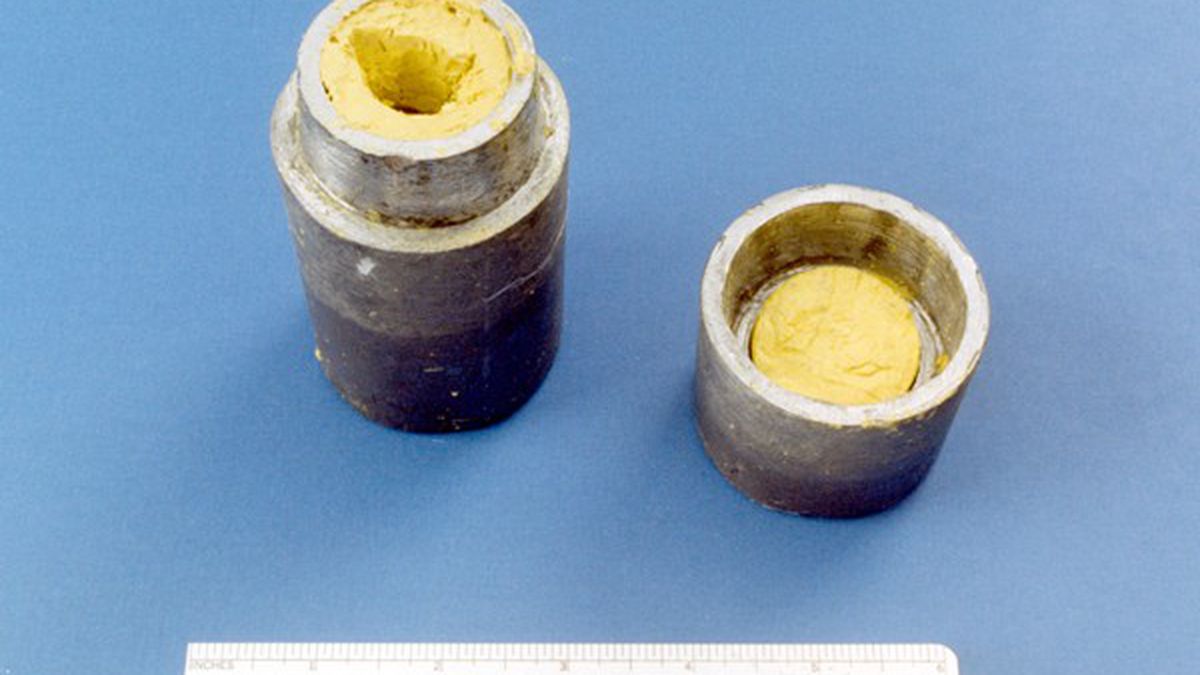Measured on a geological time scale — say, the 704 million year half-life of uranium-235 — the sixteen years since the USSR decayed into its component nation states don’t even register. Still, we short-lived humans can be forgiven for noticing a drastic change. The end of the Cold War called off the nuclear arms race, which fed a generation’s nightmares with the sickening deterrence of mutually assured destruction, but it ushered in a new nightmare for a new generation — one defined by loose nukes, dirty bombs, and nuclear terrorism.
David Smith, a senior scientist at Lawrence Livermore National Lab, is one of the clever men in lab coats trying to grapple with this reality. Smith works in the growing field of nuclear forensics, which deals with nuclear material intercepted on the black market. His Livermore team analyzes illicit uranium or plutonium in an attempt to determine where in the world it was mined and processed, and therefore, where the smuggler got his hands on it. For a new kind of nuclear threat, this detective work is a new kind of deterrence.
“We try to trace it back to its source,” Smith says. If he and his colleagues can map out the route a given piece of yellowcake uranium took before being snatched up by law enforcement, they can make a better guess at where it was diverted to the black market. “It does provide a deterrent, because countries that say they are being responsible with nuclear materials … well, this provides a mechanism to hold them accountable.”
In February, Smith gave a talk at the scientific cornucopia known as the American Association for the Advancement of Science meeting and discussed one of the most successful examples of nuclear forensics to date. Back in May of 1999, a Turkish man drove up to the border between Bulgaria and Romania. The man fit the profile of a drug smuggler, so the customs official stopped him to ask a few questions. In answer, the driver proffered a bribe.
When inspectors searched his trunk, they found a palm-sized lead container known as a “pig.” Inside the pig was a thick yellow wax; inside the wax was a glass ampoule that held four grams of fine black powder. The whole package was soon shipped to Livermore, where forensics scientists went to work not just on the powder, but also on the wax and a scrap of paper that had been wrapped around the pig.
The substance turned out to be 73 percent highly enriched uranium. The team studied its isotopic composition, which varies depending on where the ore was found, and looked for the “fingerprints” left by certain types of processing. They also used more traditional CSI methods, like analyzing the chemicals in the wax’s yellow dye and the wood fibers in the paper.
“We were able to pull together a tapestry of all this information,” Smith says. “It was one of the best-reported cases where nuclear forensics work really was quite diagnostic.” So where did that uranium come from? There Smith runs into the blank wall of classified data. “It came from within the former Soviet Union — and I have no further comments,” he says. Given that Smith serves as a science adviser to both the US Department of State and the Department of Homeland Security, it’s a good bet that he passed on the information to the right people.
It all sounds very James Bond, especially since the smuggler received a very light sentence (Bulgaria didn’t have nuclear trafficking laws), then was killed in a car accident shortly after his release from prison. But Smith didn’t start out longing for a silver Aston Martin and a never-ending supply of martinis. He earned his Ph.D in geochemistry by tramping through the Sierra Nevada with a hammer in the mid-80s. He wanted to find out how the mountain’s batholithic rock formations were created. The skill he gained in analyzing minerals and tracing them back to their origins turned out to be vital to national security.
The biggest challenge that Smith and his colleagues face is that annoying habit most countries have of keeping their nuclear secrets, um, secret. Some countries won’t disclose where they’re mining uranium ore, others don’t want to admit to refining uranium, much less release the details of their processes. All of this gives the scientists trouble when they’re trying to match an anonymous sample.
With that problem in mind, politicians like Delaware Senator Joseph Biden have floated the idea of an “international nuclear forensics library,” where nuclear samples and data could be safeguarded, and where smuggled material could be checked with some anonymity.
Smith says it’s “absolutely essential” that the United States lead the charge toward creating such a library, but he’s mindful of the political challenges. As a first step, the Livermore team has helped create an International Technical Working Group that brings together nuclear scientists from over thirty countries to share what information they can. The group includes a healthy crop of Eastern European and Central Asian countries, but Iran and North Korea are not exactly clamoring to join the party — nor are India and Pakistan. Smith had no comment on whether it’s time for him to go on a little fact-finding trip in that Aston Martin.
















